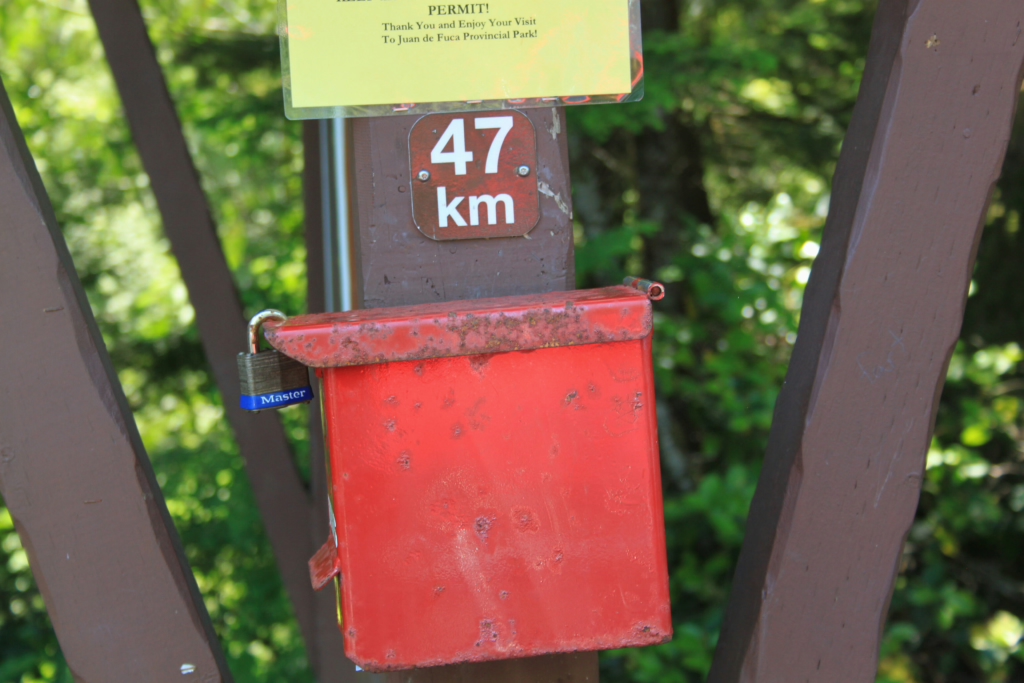All You Need To Know To Hike Juan De Fuca Trail In 3 Days
Are you into multi-day hikes and wondering where you should go on your next long weekend near Vancouver? The Juan de Fuca trail on Vancouver Island is one of my favorite hikes in British Columbia, as it blends perfectly overgrown forests with coastal views. If you like a challenge, doing the Juan de Fuca trail in 3 days is definitely up your street.
Compared to the neighboring and more famous West Coast trail in Pacific Rim National Park Reserve, Juan de Fuca is a bit shorter and ideal if you haven’t done similar treks before. In fact, Juan de Fuca is a perfect introduction to challenging terrains and backpacking along the rugged West Coast.
In this blog post I cover everything you should know before attempting hiking the Juan de Fuca trail in 3 days. Additionally, I include useful information about transportation logistics, difficulty and section by section overview.
Overview of Juan de Fuca Trail
- Description: Juan de Fuca Trail is a multi-day hike along the west coast of Vancouver Island in British Columbia, Canada.
- Duration: 3-5 days (we hiked the Juan de Fuca Trail in 3 days)
- Distance: 47 km
- Difficulty: challenging
- Best Time to Hike: May to September, but the trail is open year-round
- Recommended Trailhead: China Beach
- Are permits required? No, but a backcountry registration camping permit for $10 a night per person is required. Alternatively, you can bring cash and pay at the trailhead.
- How to get to Juan de Fuca: from Vancouver take the ferry to Swartz Bay, continue towards Victoria and past Sooke up to China Beach Parking Lot.

Things to Know before you Hike the Juan de Fuca Trail
- Latest conditions: Check the BC Parks website before you go for the latest conditions and closures. It is possible that parts of the Juan de Fuca trail remain closed due to storm damage or construction.
- Wildlife: Wildlife encounters along the Juan de Fuca trail are very common, especially bears. If you see a bear, stay calm and back away while keeping your eyes on the bear. Always carry bear spray and know how to use it in case of emergency.
- Trail conditions: Depending on the time of the year, some sections can be particularly muddy and wet. Carry gators if necessary. Also, note that in case of heavy rains, creeks may be difficult to cross.
- Mobile signal: is patchy and in some cases you may get connected to US carriers.
- Bear-proofing: At the main campsites along the trail, there will be bear-proof caches to store your food. But, in case these are full or not available, be prepared to rig your own food cache. Please, always pack out what you packed in and do not leave garbage in pit toilets. Food smell attracts bears!
- High Tides: At high tide, some sections of the Juan de Fuca trail, like Sombrio Beach, are impassable. At trailheads, you can find tide tables you can reference to. Alternatively, you can get them at local bookstores.
- Safety: always share your itinerary with family or friends before heading out.

Note: Juan de Fuca trail will remain closed throughout summer 2025, due to extensive damage from storms through the fall and winter. The good news is that day-use areas will remain open and backcountry camping is still possible at Mystic Beach and East Sombrio Beach.
How to Get to the Juan de Fuca Trailhead
To access Juan de Fuca trail, there are four main trailheads accessible from Highway 14: China Beach, Sombrio Beach, Parkinson Creek and Botanical Beach. If you plan on completing the entire 47 km multi-day hike, I recommend to either start at China Beach or Botanical Beach.
We personally decided to hike from east at China Beach and finish on the west at Botanical Beach. Since we did the Juan de Fuca trail in 3 days, our goal was to cover the most challenging sections at the beginning of the hike.
Recommendation: start the Juan de Fuca hike at China Beach and finish at Botanical Beach.
By Car
If you’re driving from Vancouver to Vancouver island, you’ll have to take a ferry from Tsawwassen to Swartz Bay first. Keep in mind that in summer and around long weekends, a ferry reservation is highly recommended. Once you arrive in Swartz Bay, drive south to Victoria. Then take Highway 1 west to merge later on on Highway 14 west to Sooke. From here, follow the signs to China Beach campground and enter the Day Use Parking Lot.
If you decide to start at any other trailheads, continue on Highway 14 until you see signs for Sombrio Beach, Parkinson Creek or Botanical Beach. Also, if you have two cars, I recommend leaving one car at the start and end of the trail. This way you can get back without having to wait on a shuttle bus or taxi.
The parking lots at each official trailhead have free parking but on long weekends they fill up fast. Also, since break-ins are possible, do not leave anything valuable in your vehicle.
Shuttle Bus Reservation
If you don’t have a car or prefer using public transportation, West Coast Trail Express runs a shuttle bus service between Victoria and all trailheads for the Juan de Fuca Trail. It runs once a day in each direction between May and September. Every day, the shuttle bus leaves Victoria around 6:45 am and on the way back arrives back in Victoria around 7:45 pm. Check the schedule for all the details.
If you start in Victoria, you’ll reach China Beach by around 8 am, which is ideal for an early start. On the way back, if you finished at Botanical Beach you’ll have to walk an additional 3 km to reach the stop on the highway by 5:45 pm.
Since we were not very flexible with time, we decided to drive by car to the Juan de Fuca trailhead. But, with enough preparation, using the shuttle bus is an excellent option to go car-free on a backpacking trip.
Taxi Ride
Taking a taxi to or from the trailheads of Juan de Fuca is another option. Orange Cab in Sooke offers transportation and fixed prices to/from each trailhead. For example, from Sooke to China Beach it costs $120, while from Botanical Beach to Sooke it’s $180. If you find other hikers that are looking to split the route, this could be an economical way of sharing costs.
Hitchhiking
Hitchhiking between the trailheads of Juan de Fuca is not technically legal but a viable option. Of course, if you find someone willing to bring you back to your car. We had to resort to this option at the end of the trail but it wasn’t as easy as we thought. Luckily, a lady that noticed us on the trail, was kind enough to bring us closer to where we left the car. As a result, hitchhiking usually means long waiting times and some luck.
How many Days to Hike the Juan de Fuca Trail
Although we completed the Juan de Fuca trail in 3 days, I recommend putting aside at least 4 days. The reason for it is that Juan de Fuca is a challenging hike with steep sections but breathtaking coastal landscapes. If you want to fully enjoy the experience, you should schedule some time for relaxing at the beach after a long day of hiking. Personally, we only did the trail in 3 days because we didn’t have any extra time.
However, if you’re a fast hiker or if you do trail running, you can complete the Juan de Fuca trail in 3 days or less.
Best Time to Hike the Juan de Fuca Trail
The best time to hike the Juan de Fuca Trail is usually between April and October, when the risk of rain is lower. But, keep in mind that if you plan on taking the West Coast shuttle bus connector between trailheads, this only operates between May and September.
Outside of this time, check the trail condition, as heavy rain during the winter months might block the access to parts of the trail.
Which Direction to Hike the Juan de Fuca Trail
When hiking the Juan de Fuca trail, you can decide to go north to south (Botanical Beach to China Beach) or south to north (China Beach to Botanical Beach).
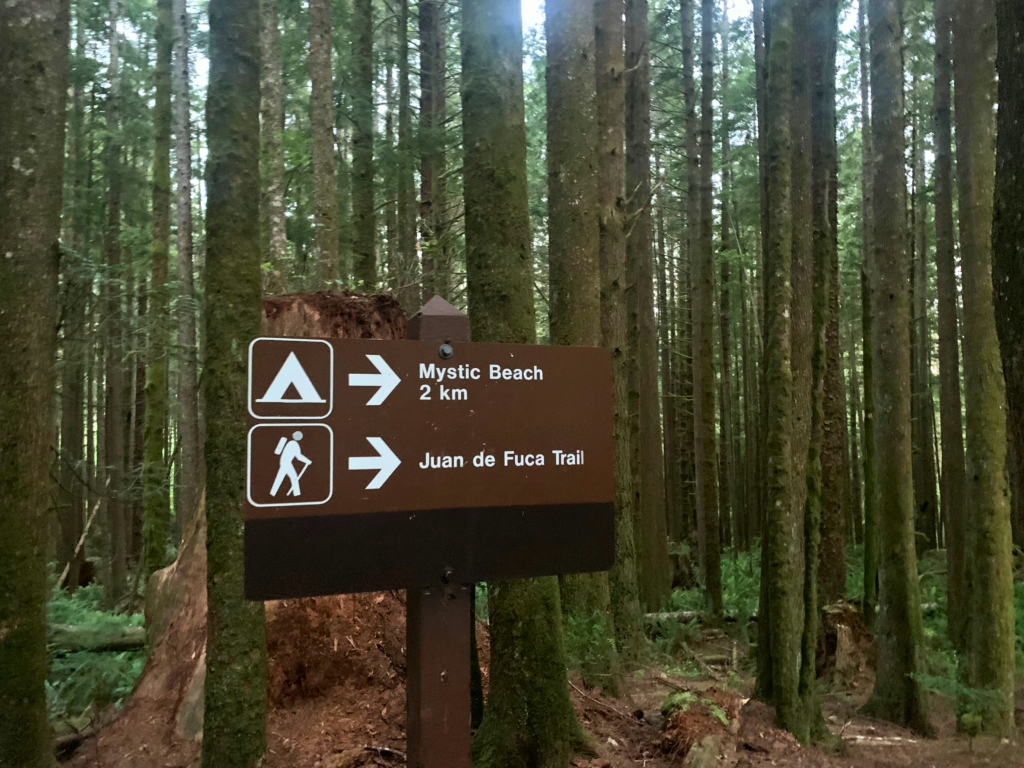
The argument to start in the north at Botanical Beach and hike south to China Beach is that once you reach the more difficult part of the trail (between Chin and Bear Beach) your backpacks will be lighter. Therefore, you’ll have to carry less weight through the steeper sections.
If you prefer to tackle the most difficult part of the trek at the beginning, I recommend starting in the south at China Beach. This is what we’ve done. Although we covered the most difficult section with heavier backpacks, we were glad to have tackled the strenuous section first.
Permits and Camping on the Juan de Fuca Trail
If you want to camp along the Juan de Fuca Trail, you’re required to purchase a backcountry camping permit. You can either get one online through BC Parks Camping or by depositing your camping fee at the self-registration box located at each trailhead. Note that online registration is only available 14 days before your check-in date. The cost for an adult is $10 per person, per night.
Camping along the Juan de Fuca Trail is only permitted in designated beach and forest sites, which are open year round. I’ve pinned the main coastal campsites on the map above.
🥾Hiking Tip: another great hike on Vancouver Island is 5040 Peak, which can also be combined with a Nanaimo to Tofino road trip!
Section Breakdown: Juan de Fuca Trail in 3 Days
Although we’ve hiked Juan de Fuca trail in 3 days, it is best done in 4 days. Generally, the section from Bear Beach to Chin Beach is the most strenuous of the entire trail. Despite it not being technically difficult, the several short but steep hills followed by uneven terrain, trees blocking the path and mud, made it a very long and hard day.
Below I break down our itinerary of hiking Juan de Fuca trail in 3 days. Additionally, I include useful tips on how to tackle each section and where you can add an extra day to the Juan de Fuca trek.
Day 1: China Beach – Mystic Beach – Chin Beach
Campground: Mystic Beach (the night before) and Chin Beach
Distance: 19 km
Difficulty: Most Difficult
Elevation Gain: 893 m
From the parking lot at China Beach follow the indication to Mystic Beach. After about 1 hour, you’ll reach the beach and the campsite. Here, you can camp on the beach directly or on the tent sites tucked into the forest, on the east side of the trail and at the end of the beach. But, be cautious of pitching your tent on the beach when tides are high.
We arrived late in the evening and slept for the night at Mystic Beach. This way we were able to start early the next day.
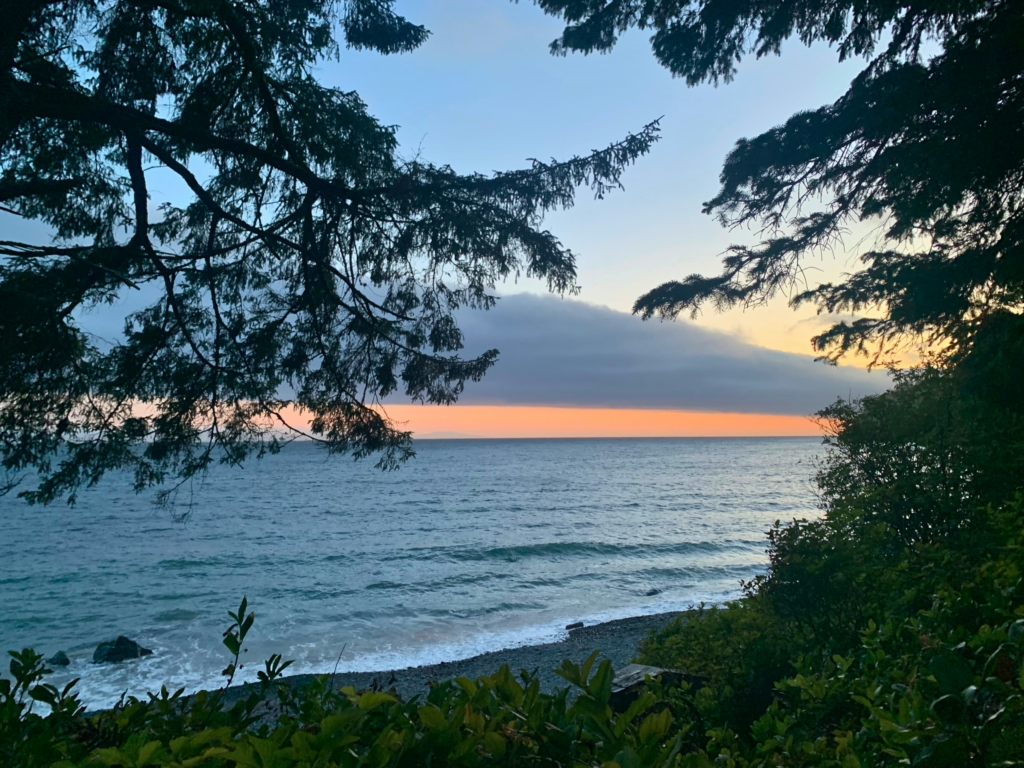
The section from Mystic beach to Bear Beach follows the coastline, opening up at some viewpoints over the ocean. Overall, the trail climbs uphill and descends downhill multiple times, before reaching Bear Beach by means of a ladder.
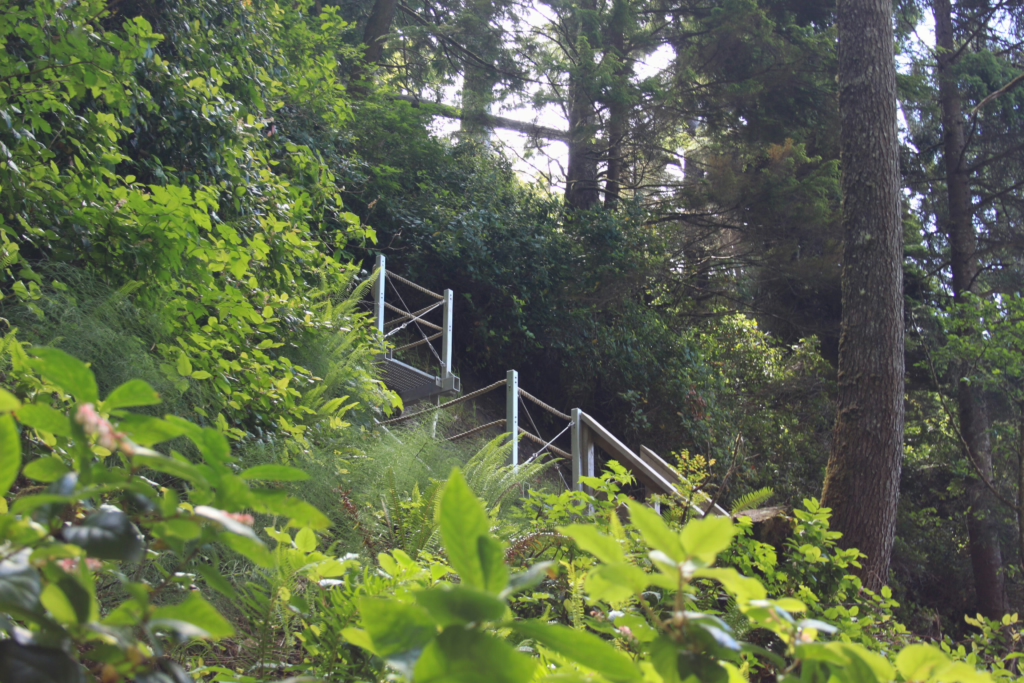
Bear Beach is one of the longest beaches on the Juan de Fuca trail. Since it’s quite rocky, watch out your footsteps to avoid twisting your ankle.
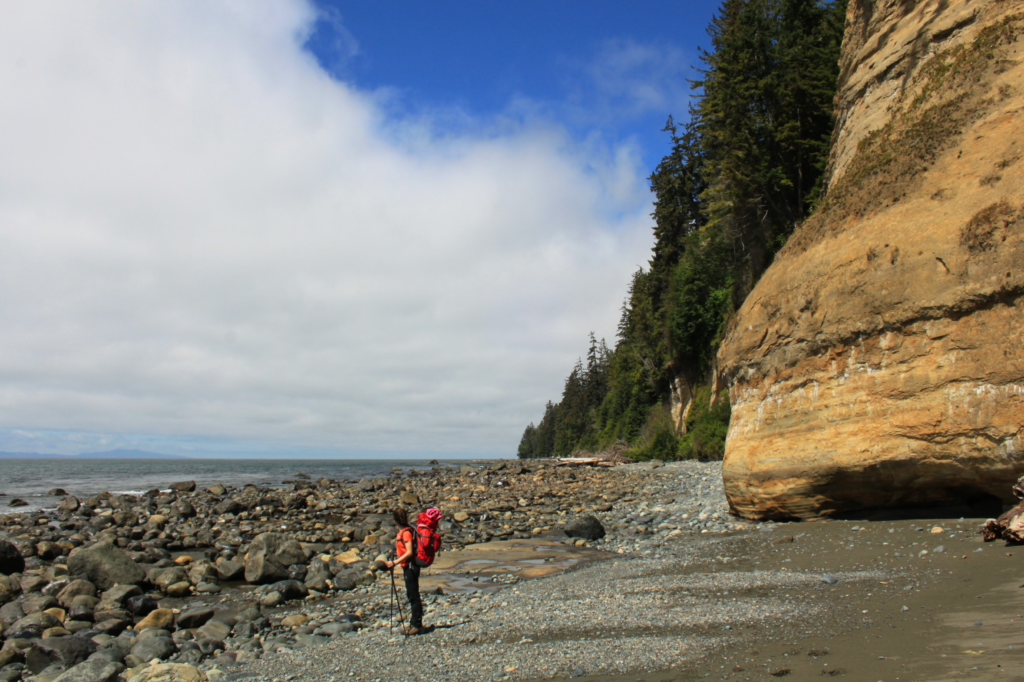
The section from Bear Beach to Chin Beach is the most difficult of the Juan de Fuca trail. Here is when we really regretted committing to doing the Juan de Fuca trail in 3 days. I believe that we’ve underestimated it and maybe rushed a bit to complete the trek. What killed us the most was the expectation of being close to the campground but having to re-estimate the distance after each uphill and downhill.
As soon as we reached the campground at Chin Beach, we went straight to bed. Before your descent to the beach, you’ll come across some tent pads. But if you prefer camping on the beach, you’ll find a few flat surfaces to pitch down your tent.
Note: if you don’t want to do the Juan de Fuca trail in 3 days and prefer to extend it to 4 instead, you can spend the first night at Bear Beach Campsite and the second at Chin Beach. This is the hardest section of the entire trail, so taking your time in crossing it could be a good idea.
Day 2: Chin Beach – Payzant Creek
Campground: Payzant Creek
Distance: 19 km
Difficulty: Moderate
Elevation Gain: 410 m
The section between Chin beach and Payzant Creek was my favorite along the Juan de Fuca trail. You’ll climb steep hills and cross a creek through the suspension bridge, but you’ll come across some of the best views on the entire trail. The closer you get to Sombrio beach, the more magical it gets.

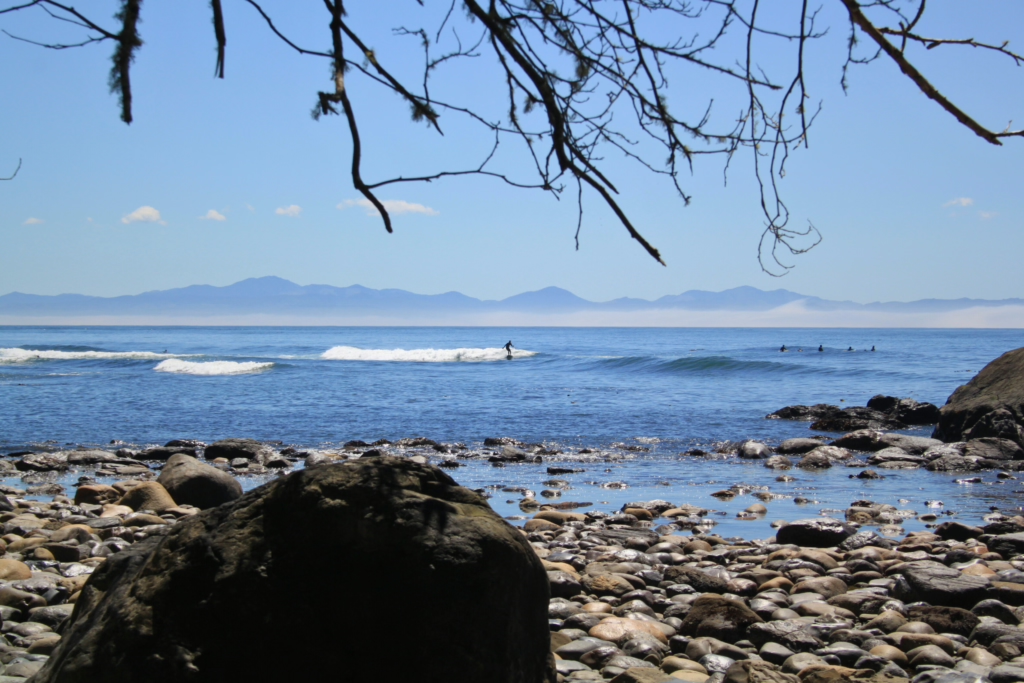
At Sombrio Beach, at low tide, you can follow the beach route to continue on the Juan de Fuca trail. But, at high tide, you have to take the upper route at the end of the beach. This will lead you through the forest straight to Payzant Creek, where you can camp for the night.

Day 3: Payzant Creek – Botanical Beach – Port Renfrew
Distance: 10 km
Difficulty: Easy
Elevation Gain: 100 m
The last section of the Juan de Fuca trail is in my opinion the easiest. Not only is the trail very well maintained, but the wooden boardwalks make it very easy to traverse.
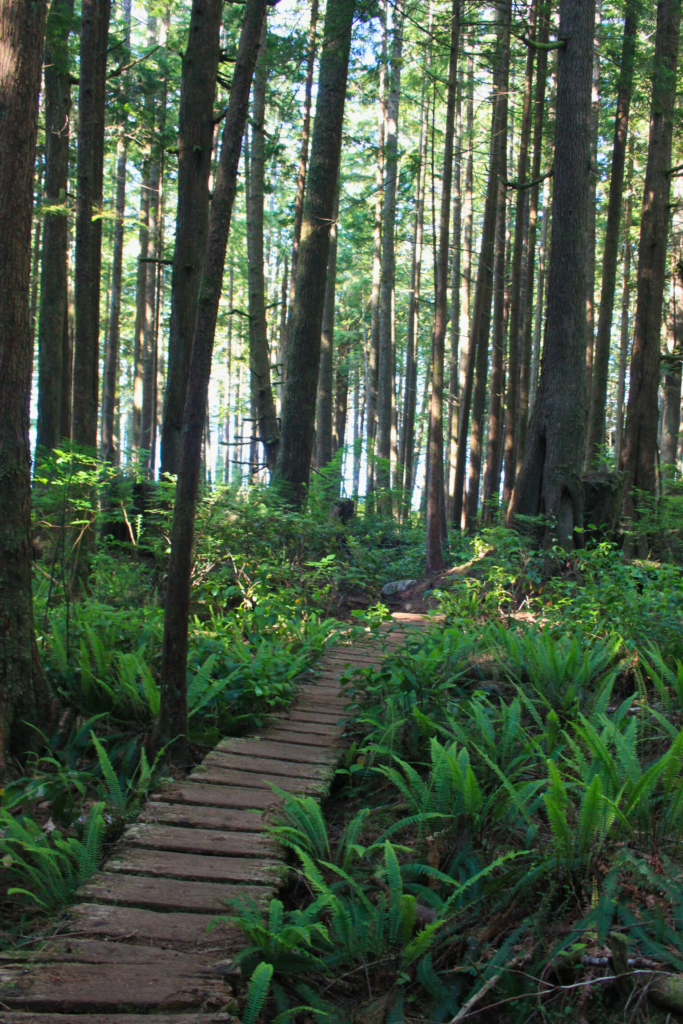
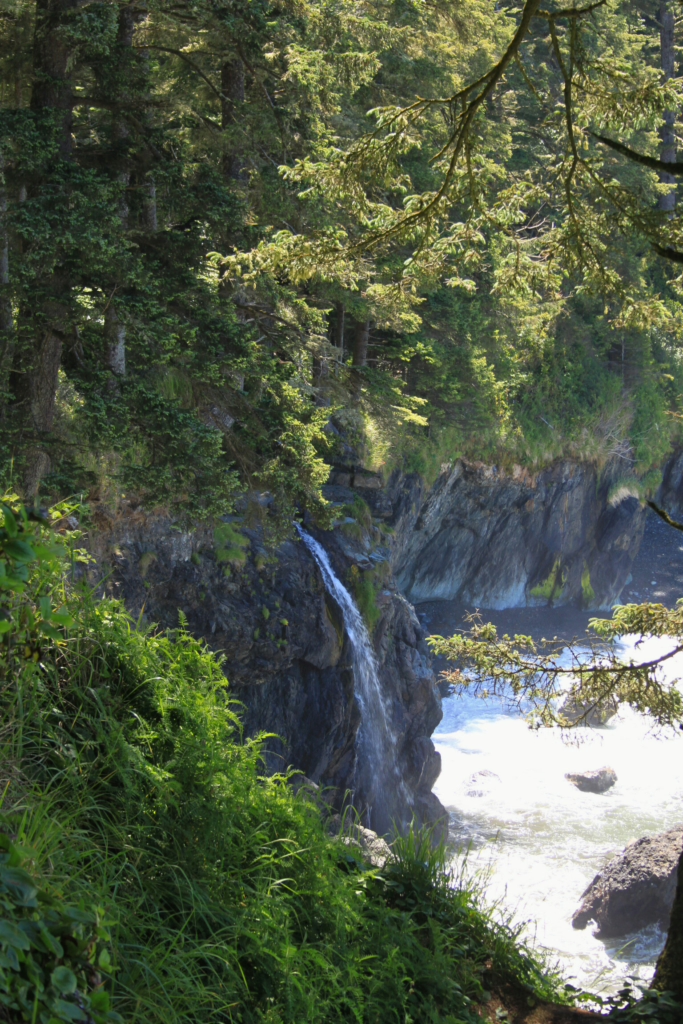
Completing the Juan de Fuca trail in 3 days and seeing the end marker was an incredible feeling. If you’re not in a rush and have some extra time, stop to admire the tide pools at Botanical Beach. When the tide is low, you can explore the rocks and look into the naturally formed pools to see interesting marine life such as sea urchins, fish, starfish and much more.
If you parked your car at China Beach and need a lift back, you can either get on the shuttle bus or opt for hitchhiking. Then if you have some extra days on your trip and want to unwind, you could spend 3 days in Tofino.
